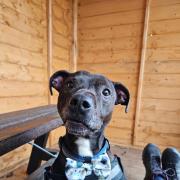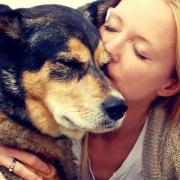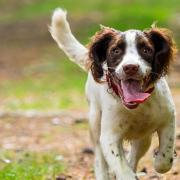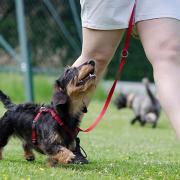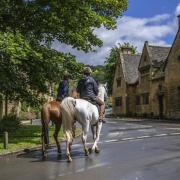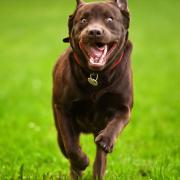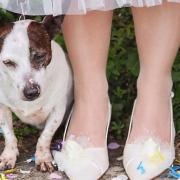Find out how to make dog training easy, fun and effective with Cotswold Raw’s tips for using food in training and to bridge that dog-human communication gap

If you are a dog owner, you will, no-doubt, know what motivation works for your dog when training, whether it’s throwing their favourite toy as a reward, using a clicker, or feeding small treats. For those who have only just bought a new puppy, or have never trained a dog using food before, or maybe not even trained a dog at all, here are a few helpful tips from Cotswold RAW about using food during training.
1. Only use small treats
A dog’s weight is very important to maintain as, like us, it can adversely affect a dog’s physical wellbeing. You will also be able to train that bit longer, as your dog will not get full as quickly. However, make sure you do reward them consistently at the beginning of training, otherwise they may get confused, teaching will be harder, and they may even begin to lose interest in learning altogether.
2. Reward calmness
Whilst it’s great to see a dog enjoying their training session, make sure you keep them calm, otherwise you are rewarding a dog for excited behaviour, which can quickly turn into destructive behaviour. Your furniture, and carpets will thank you later!

3. Reward every progression
Don’t be too ambitious when you first start. Training is a long-term process, and a dog needs time to understand what you want them to do. Start with small steps and reward each progressive victory, rather than trying to teach them an entire movement in one go. This will keep stress levels down, and help you to keep that much more control throughout your training sessions. Often the first few times they do it correctly is accidental, but rewarding them enforces this accidental behaviour until they begin to do it themselves.
4. Progressively remove the treat
Whilst treats are an excellent way of helping you to teach your dog, make sure your dog doesn’t begin to use it as way to get food through bribery. Highly intelligent dog characters in particular may be quite quick to pick up on this idea. This problem will then undermine your entire training plan. It is, unfortunately, a difficult habit to break, so keep it under wraps before any issues start.
To avoid this problem, use the treat a few times to entice the dog to do what you want, then use the same gesture but keep your hand empty. Then, when they complete the task give them verbal encouragement – a yes will do fine. Then, give them the treat via your hand, or put it on a nearby surface. When they start to fully understand the command, you will be able to get rid of the treat entirely.

5. Find a quiet place
If you are finding it difficult keeping your dog’s attention during your sessions, find a quiet place away from other dogs, people and any distractions. Make training as easy as you can on both you and your dog and you’ll find that training becomes a pleasure, which you both look forward to, rather than a bitter battle.
6. Change food rewards
Try out a range of treats, or change them up once in a while. This will stop your dog getting bored, and keep them interested as you continue training. Why not browse through Cotswold RAW’s range of meaty treats?
7. Clicker training
Try using a clicker when you give your dog a treat. Your dog will associate the sound of the click with a reward, so that when you start to remove the treat, they will still hear the click. The sound will then replace the treat in the long term.
At Cotswold RAW, they make delicious treats that you can use to train your dog. Made from dried meat they sell a range of meaty treats for your dog to enjoy, from chicken and beef, to lamb and rabbit. However, they do advise that you cut the treats up as they are very big, particularly for a smaller size dog.
If you have any questions about the treats at Cotswold RAW, give them a call on 01386 426 335, or alternatively fill in the contact form.










